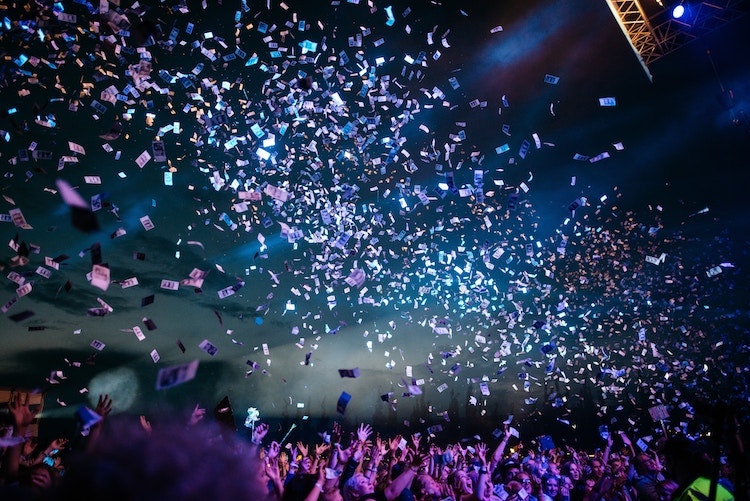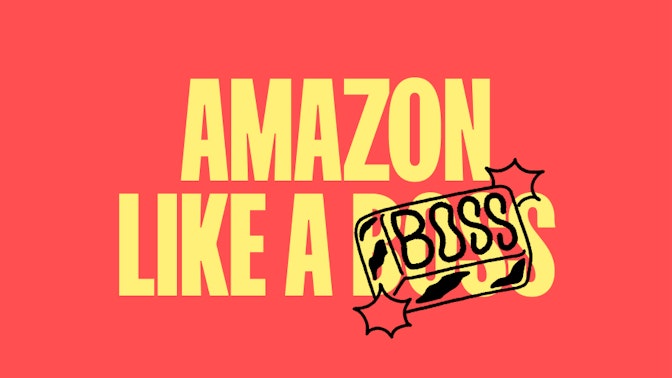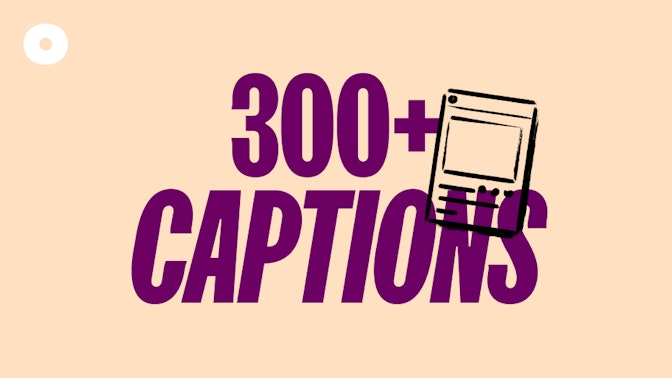As a marketer, you’ve struck gold when you can engage your audience in an organic and meaningful way.
Going a little further, you’ve found the Holy Grail when those engaged audiences are so intrigued that they voluntarily share those experiences with others.
If you do it right, that’s exactly what experiential marketing is capable of.
I like to think of experiential marketing as a next-level marketing approach, as opposed to the more traditional “spray and pray” tactics that involve brands bombarding consumers with marketing messages.
On the contrary, experiential campaigns are pure in their authenticity – and unlimited in their potential to grow your business.
At face value, research shows that consumers who have a positive experience at branded events are 74 percent more likely to make a purchase with that brand.
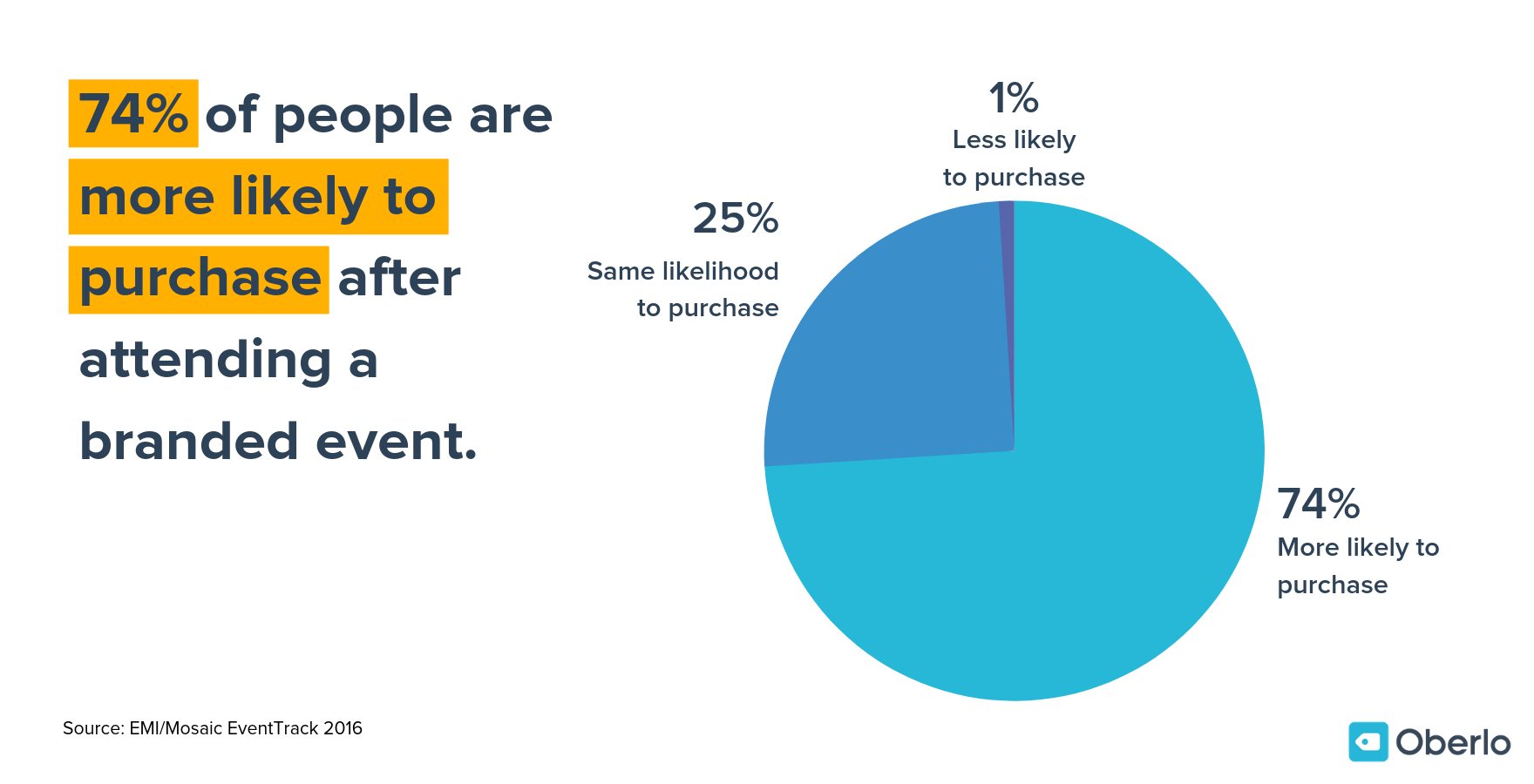
But long after the purchase, a strong experience can create a lasting customer bond that keeps on giving long after the event (and the sale) are over.
Let’s get our hands dirty exploring what experiential marketing is, the benefits for businesses, a few great experiential marketing examples, and some tips as you go forth on your own quest.



What Is Experiential Marketing?
Like the name suggests, experiential marketing is a type of marketing that involves creating physical experiences with consumers. It’s also called engagement marketing.
It’s a lot different than more traditional forms of marketing, where companies blast out one-way ads, posts, and other messages, hoping that consumers will engage with them.
→ Click Here to Launch Your Online Business with Shopify
Instead, experiential marketing is more of a two-way street, where your audience is engaged because they’re actively participating in the experience you’ve created for them.
You may have heard the term “event marketing” used interchangeably with experiential marketing. While some events can count as full-on experiences, this isn’t always the case.
Often, event marketing is still a one-way situation that lacks the interactive element.
Benefits of Experiential Marketing
To put it frankly, there’s nothing that compares to the unique and long-lasting benefits of experiential marketing.
In addition to more authentic connections with your customers, good experiences get to bask in the rays of their social impact and the strong word-of-mouth that results.
Let’s explore these concepts.
More Authentic Connections with Customers
There are loads of data that show that consumers have less trust for traditional advertising, coupled with more desire for enriching experiences over material possessions.
This is an especially huge trend among millennials.
One study showed that 84 percent of millennial respondents don’t trust traditional media. And another shows that 72 percent preferred to spend their money on having a good time over new stuff.
When you put these two together, experiential marketing is a shining path to deeper connections.
Social Impact and Word-of-Mouth
Experiential marketing can be invaluable for a brand – not only because of the relationships it can build with consumers, but also the potential social impact.
That’s because, in many cases, consumers who genuinely have a good time at an experiential marketing event will voluntarily share their experiences with others.
A report by the Event Marketing Institute showed that out of the respondents, an incredible 98 percent created some form of digital content, like taking a photo or video on their smartphone.
And of those, 100 percent of them voluntarily shared that content with others (likely in the form of social media posts, direct messaging, and more). This word-of-mouth is a priceless gift.
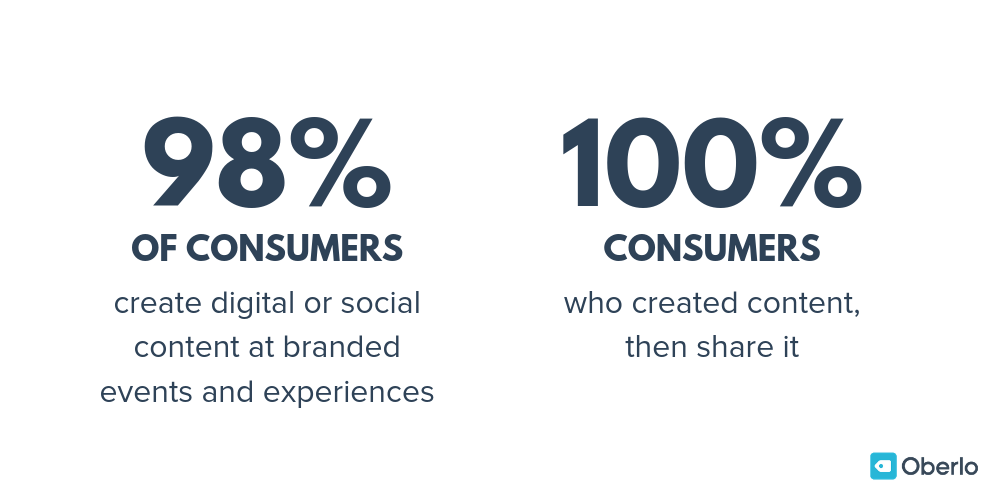
Now that you’re sold on why experiential marketing is a great idea, it’s time to dive into a few examples of brands that nailed it.
4 of the Best Experiential Marketing Campaigns
Sometimes, the best way to learn is to take a lesson from the pros.
Let’s take a look at some of the best experiential marketing campaigns and what made them so unique and impactful. And hopefully, you’ll get some bright ideas for your own campaigns.
1. The Economist’s “Discomfort Future”
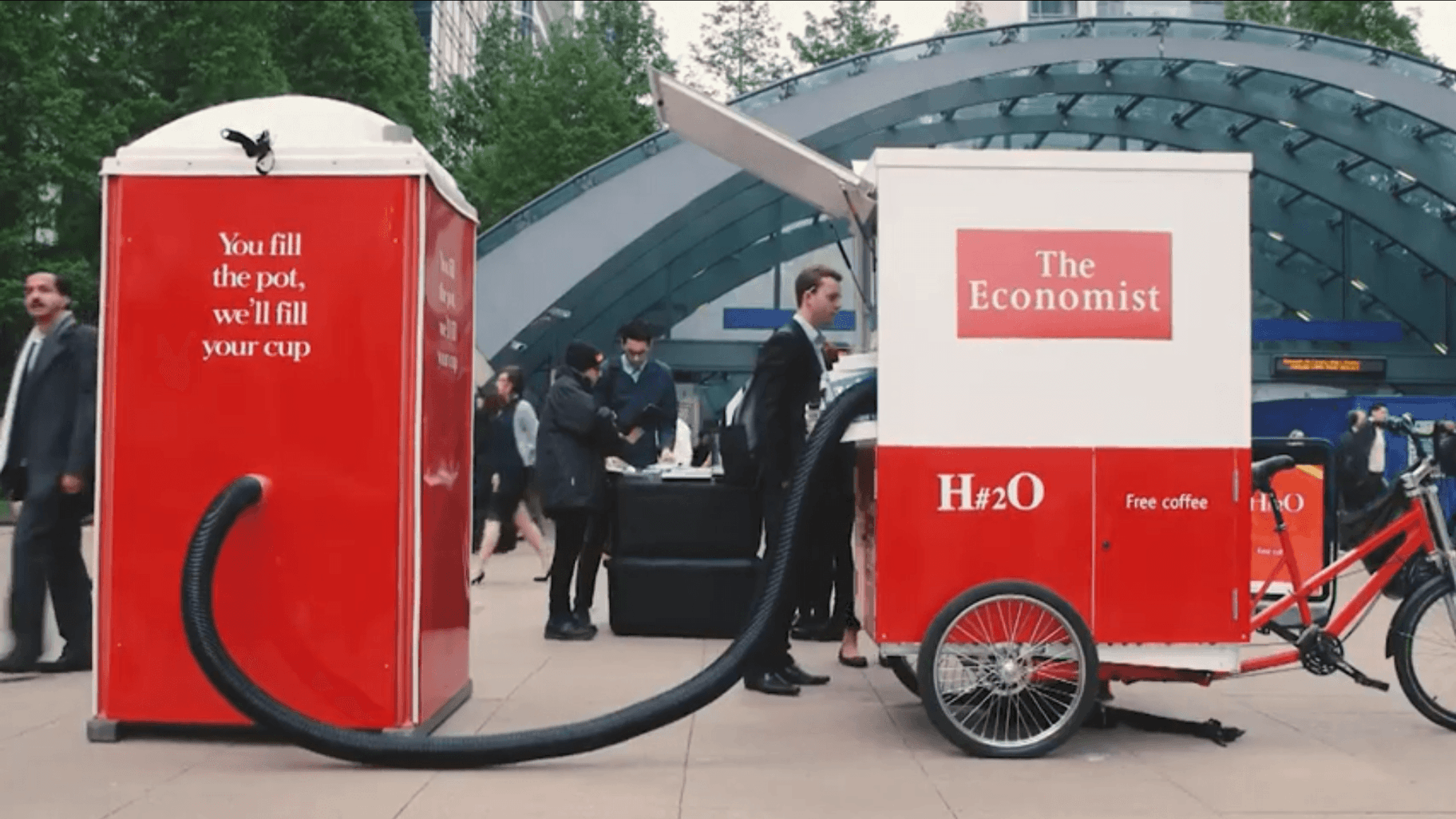
The Economist is a media company that covers topics like international news, business, politics, finance, economics, and technology, and how these issues are impacting the world at large.
The company was well aware that they had developed a reputation as being dry and technical, when in reality it’s a great source of information for people who really care about the forces that are shaping our future.
But the content isn’t exactly light reading. It’s for people who want to read long, in-depth articles on these complex topics.
To help change their image and engage the right kind of audience, The Economist developed a brilliant series of experiences over the course of two years that aimed to take people out of their comfort zones.
Why? Because those are the kind of people who find their content valuable and stick around past the initial promotional offer.
These experiences included events where people were served worm ice cream, grasshopper crepes, waste food smoothies, and reclaimed water coffee.
You read that right. Bugs, trash, and human waste.
They chose this angle to reflect several Economist articles that covered topics like the future of food, recycling, and sustainability.
And it worked. The “Discomfort Future” campaign had an incredible impact:
- More than 25,000 new subscriptions – 60 percent of which stayed past the promotional offer
- More than £1.7 million in lifetime revenue
- 171 percent return on investment (ROI) from the campaign
Check out the video from The Economist’s marketing agency Sense:
2. Globetrotter’s Bad Weather Rooms
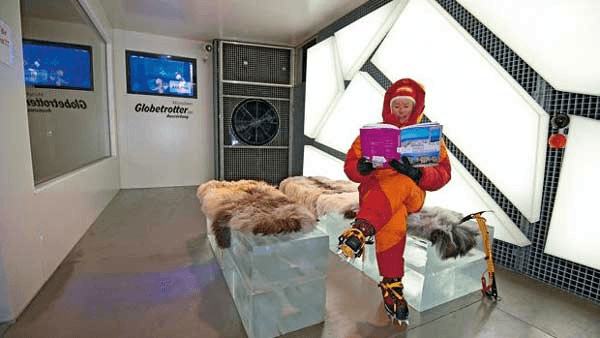
Globetrotter is a European sports equipment company that makes gear for outdoor activities. This includes clothing that’s meant to withstand all sorts of adverse weather conditions, from rain to snow.
To put their products to the test, the company partnered with integrated marketing agency ZipWolf for their “bad weather rooms” retail experiential marketing campaign. These rooms simulated the conditions that the clothing items were meant to protect against.
Customers could gear up into winter coats, pants, and boots, then enter a freeze chamber with temperatures as low as –30 degrees Celsius.
Or, they could try on rain-proof items and stroll into a room that poured water and blew storm-grade winds.
This experiential marketing strategy was a great point-of-sale event to put Globetrotter’s money where its proverbial mouth is, proving to customers right on the spot that it’s top-quality.
And of course, it doubled as a fun, unique experience that surely kept customers chatting about it long after they left the store.
3. VEEV’s “Cheat on Vodka”
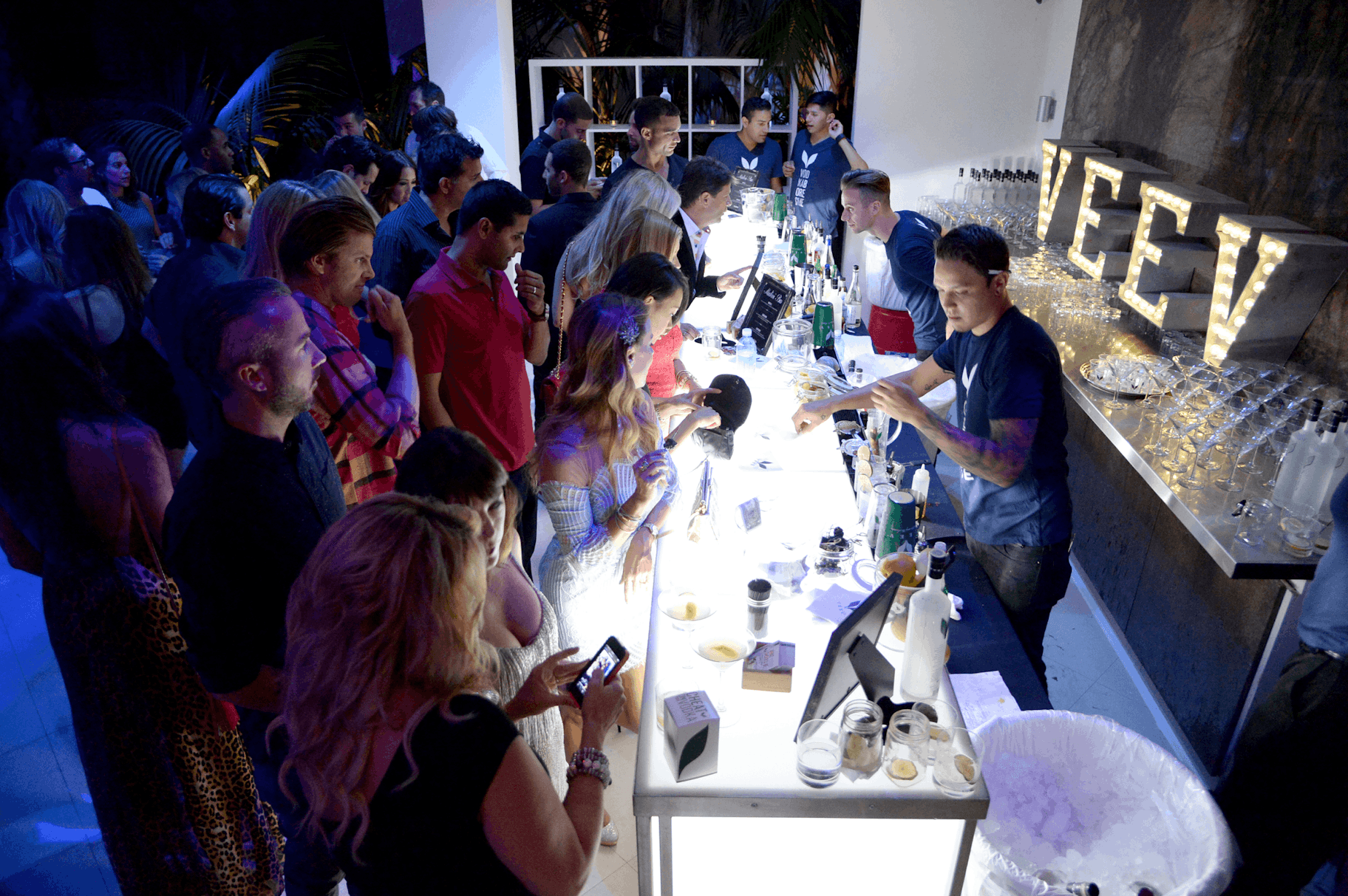
While a big budget can open a world of high-tech and complex opportunities, it’s just not always possible for small businesses. Veev goes to show that you don’t have to break the bank to come up with meaningful, memorable experiential marketing ideas.
Veev, a company that makes all-natural acaí berry spirits, had the brilliant – and bold – idea of going up against vodka.
The “Cheat on Vodka” campaign started off in New Orleans at an annual summer convention called Tales of the Cocktail.
Veev supplied a vending machine that was filled with small sample bottles of its leading spirit. To get a free bottle, passersby just needed to tweet the branded hashtag #cheatonvodka, and the machine would automatically dispense their boozy reward.
The company also served Veev cocktails and gave out free merchandise, including sunglasses and t-shirts brandished with the company’s catchy #cheatonvodka hashtag.
Veev continued this alcohol adultery party at several other locations, helping to significantly grow its reputation and recognition.
4. Google’s “Building a Better Bay Area”
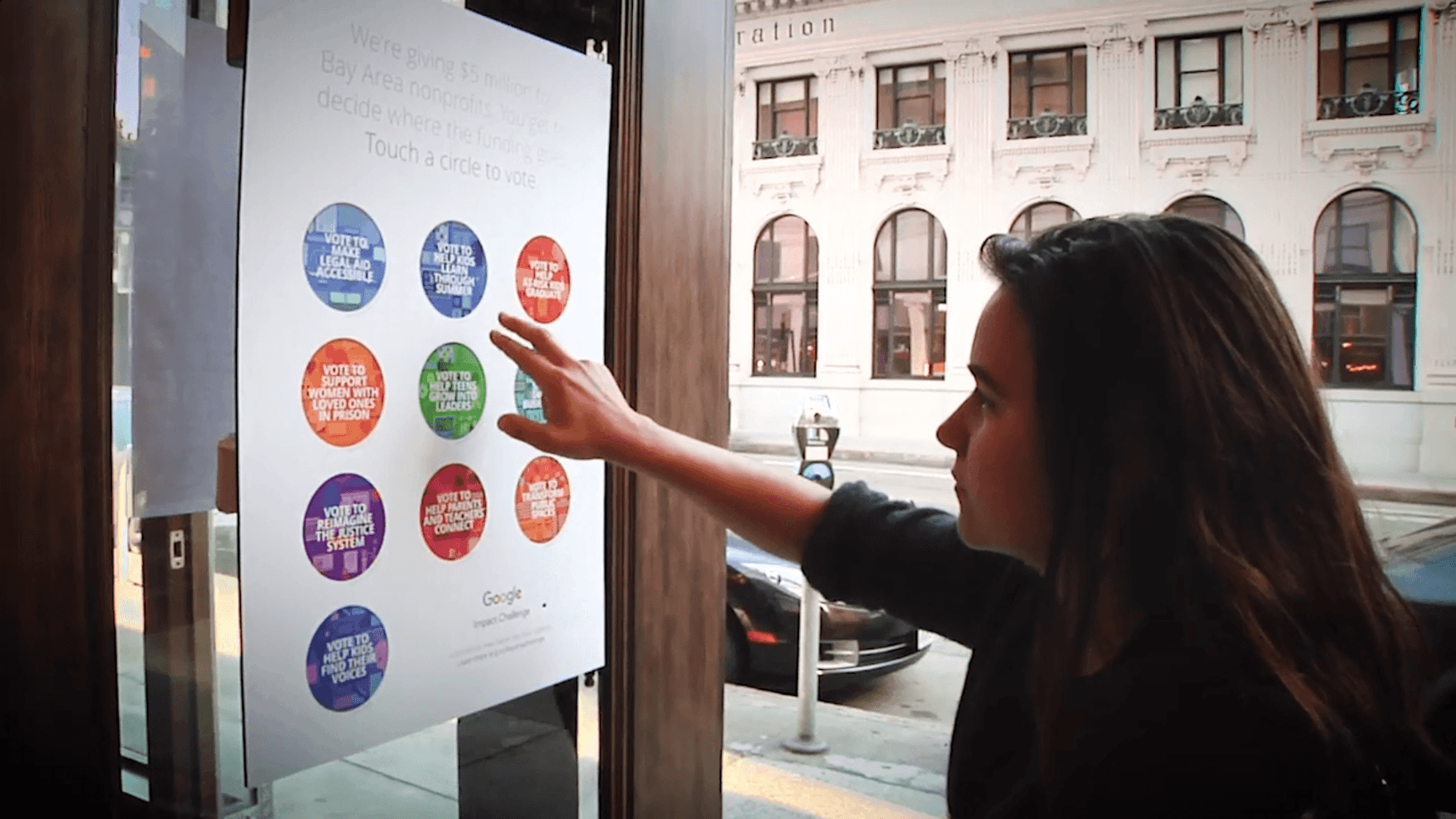
Sometimes, global giants want to give back to the communities that helped them grow. Google decided to donate $5.5 million to local charities in California’s Bay Area.
But before Google’s leaders chose which organizations and causes to donate to, they wanted to hear which issues the members of the community cared about most.
So they created unique digital interactive posters and hung them up all over the city, from street displays to coffee shops to food trucks.
These posters showed 10 circles, each with a different issue. These issues included making legal aid accessible, helping at-risk kids graduate, growing small businesses, and transforming public spaces.
To vote, people just touched a circle and the touch-sensitive poster registered the vote.
Google also used the branded hashtag #GoogleImpactChallenge to keep the conversation strong online, which gave community members even more opportunities to spread the word and increase their peers to participate.
Within three and a half weeks, this experiential marketing campaign was the talk of the town as it generated more than 400,000 votes across the Bay Area.
Check out the event’s promo video for more details:
Google: Bay Area Impact Challenge from Ben Beazley on Vimeo.
How to Build a Killer Experiential Marketing Strategy
Experiential campaigns can be tricky to pull off, but when the campaign is both strategic and calculated, the reward is totally worth it.
Let’s take a look at some ground rules for building and executing your experiential marketing strategy.
Align Your Business Goals
If you look at experiential marketing examples from today’s biggest brands, you’ll quickly see that the costs can add up fast. This is especially true for experiential campaigns that use cutting-edge technology.
That’s why it’s non-negotiable to go in with a strong plan.
First, you should think critically about your business goals if you don’t already have them laid out.
What exactly are you trying to accomplish? Ideally, the experiential campaign that you stew up will have a direct tie to one or more of your major goals.
Consider The Economist’s “Discomfort Future” example above. The brand’s goal was to increase subscriptions among the right audience, so that they stick around past the promotional period.
That’s exactly what happened. The company was able to hone in on a specific character trait of its target audience (a sense of adventure and a willingness to be uncomfortable), and maximize its results by appealing to that sense of adventure and relating it to the magazine.
Integrate Online Elements into the Offline Experience
It’s absolutely critical to tie online elements into your experiential campaigns. For many companies, this means utilizing tech as the foundation of the experience to entice and captivate their audiences.
Here are a few ideas to ensure that you’re taking full advantage of the online world to promote and amplify your event.
Promote with Online Marketing
From email marketing to cost-per-click (CPC) to social media marketing, you should go full blast to ensure that the world knows about your event.
Unless, of course, you’re going for more of a guerilla marketing style, in which case you should ensure that you’re in the right place at the right time.
Have a Great Website
Leading up to your event, it would be ideal to have a separate website to promote it. You can use this URL in all of your online marketing campaigns that we discussed above.
While it’s not absolutely critical to have a separate website, it can be an immense tool for generating interest leading up to your experiential campaigns.
Consider Creating an Event App
Depending on the nature of your event, a specialized event app can supercharge your ability to build lasting connections with your audience.
You can use your app to provide critical scheduling and logistics details, or to drive further engagement during the event and after it takes place.
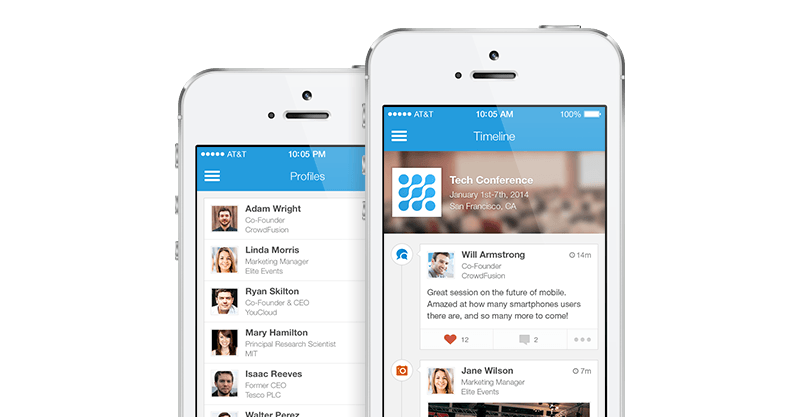
Use a Branded Hashtag
As you saw in our examples above, a branded hashtag is almost a status quo for today’s experiential marketing strategy.
I mean, the second you sign onto virtually any social media platform, you’re instantly flooded with hashtags. So it makes perfect sense to integrate these into your experiential marketing campaigns.
In addition to the engagement that hashtags promote, you’ll also end up with a nice and organized collection of posts around the event.
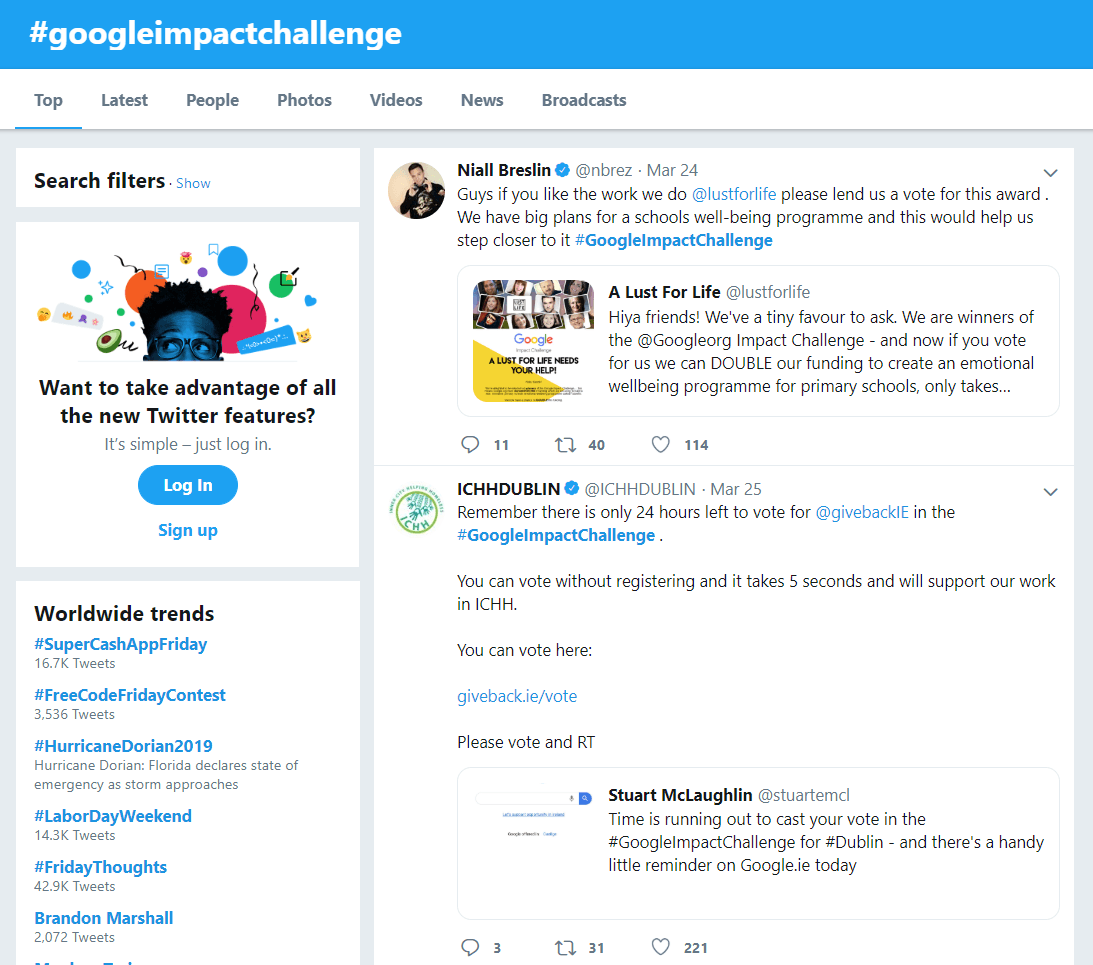
Go Big or Go Home – Don’t Settle for Mediocre Experiences
If there’s one takeaway from this guide, it’s that half-assing an experiential marketing campaign is a tragic waste of opportunity.
The whole point is to absolutely wow your audience, drawing them into the experience and keeping them talking about it for days or even weeks after it’s over.
Planning the perfect event will take some careful balancing of your research, goals, capabilities, and resources.
And while you may see some opportunities to “work smarter, not harder,” resist the urge to sell yourself short!
Better Experiences, Better Brands
These days, you can’t just run some internet marketing campaigns and call it a day for promoting your business.
Consumers want experiences – authentic, captivating, and memorable experiences that cater to their own personal interests while showing them that your brand stands out from the rest.
While some experiential marketing examples can look daunting and out of reach, it’s certainly possible for smaller brands to harness the power of a magical experience.
All it takes is some thorough research and strategy, along with some imagination and creativity, and you have a world of possibilities for making a lasting impression and skyrocketing your company’s performance.
Have you ever run an experiential marketing campaign? Tell us about it in the comments below!



